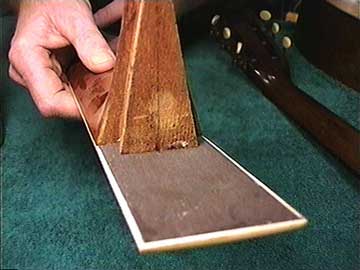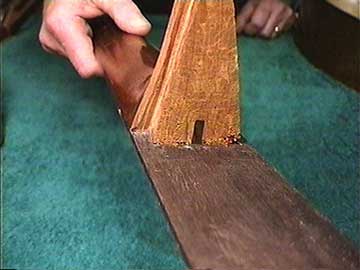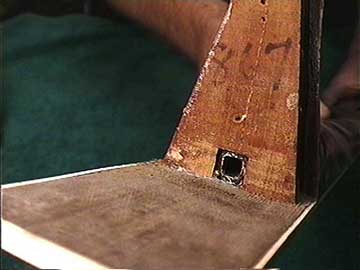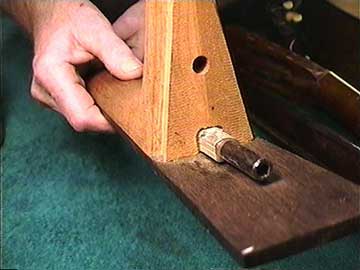Martin Guitar Truss Rods
© Frank Ford, 9/28/98; Photos by FF, 9/11/98
I just noticed today that I had an interesting photo opportunity. We have several Martin guitar necks out of their bodies for repair, and there is one of each type of neck reinforcement so I can show them to you.
The earliest Martins had no neck reinforcement:

This one was made in 1887. The neck was carved from a single piece of Spanish cedar and it has remained strong and stable because the workmanship and materials were top quality. In those days, Martin made only gut strung guitars. The low tension of gut strings is not likely to bend a neck.
As steel strings became an option, Martin added a simple ebony reinforcement bar inlaid in the neck under the fingerboard:

It's about 3/16" wide and serves to stabilize the neck suffieciently. Bar frets were still the standard then, and they tended to give the neck superior rigidity.
In the early 1930s, Martin started making guitars with narrower, 14-fret necks. The need for extra neck strengthening was met by the "T-bar" steel reinforcement:

With its hefty "T" cross section, this steel bar remained the standard for about 30 years
In the 1960s a new, still nonadjustable, reinforcement replaced the T-bar. It's a 3/8" square steel tube:

A square tube is nearly as rigid as a solid bar, but weighs less. In addition, the square tube resists twisting more than a T-section. (Not that twisting was ever a problem with Martin necks.)
Here's a closer look at that square tube:

I have an old broken neck, so I was able to cut it.
Around 1985, Martin finally started using an adjustable rod, which can be reached through the soundhole for adjustment:

The adjustable rod allowed Martin to make their necks a bit slimmer to meet popular requests.
Now the adjustable rod is a standard feature of Martin (and most other) steel string guitars.
Oh yes, I do have an opinion. The adjustable rod is definitely superior.
Back to Index Page